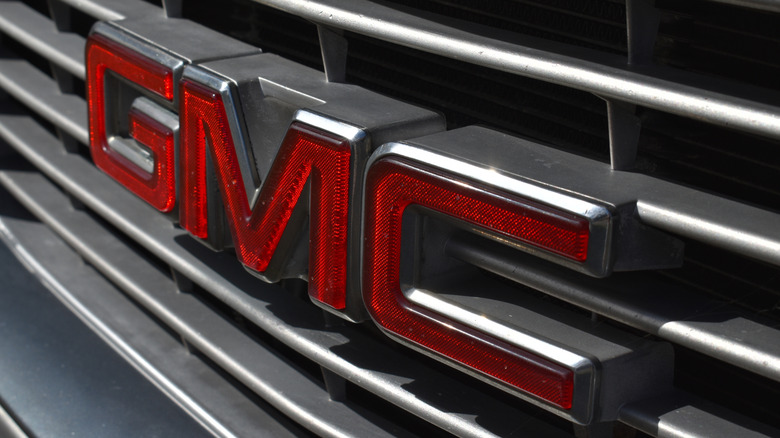GMC's Remarkable Twin Six Engine: The Story Behind General Motor's Monstrous V12
The 1960s were friendlier times for American motorists. The national average gas price between 1960 and 1962 was only $0.31 per gallon, and there were no EPA regulations to ruin the fun. During this time, American legacy automaker General Motors debuted its monstrous 11.5-liter V12 engine for heavy-duty trucks, and it remains a giant even by modern standards. How big? It's the largest-displacement production engine from a major automaker since WWII, bigger and heavier than the most substantial V8 engines to reach the production lines of GMC.
Affectionately called the Twin Six V12, this gargantuan engine is not merely two inline-six engines merged to form its V12 configuration. GM introduced a new family of heavy-duty 60-degree V6 engines with 305 to 478 cubic inches of displacement, pushrods, a single cam, and a six-throw crankshaft in 1960. Then, in 1961, GM unveiled the mighty Twin Six V12 derived from two new V6 engines, a perfect addition to the automaker's lineup of new truck engines.
The result is an 11.5-liter (702.4 cubic inches) V12 with four-cylinder heads, a single-piece cast-iron crankcase, a four-foot-long forged crank (that weighed 190 pounds), 56 head bolts, and a massive crankshaft that measured four feet long. It also has a pair of oversized downdraft carburetors neatly stowed in the vee to feed the thirsty engine copious amounts of fuel and air.
GM Twin Six V12 Engine: For the long haul
With everything installed, General Motors' Twin Six V12 engine tipped the scales at a portly 1,500 pounds, making it heavier than many compact or midsize cars. It has an oil sump holding four gallons of oil (15 liters) and a high-volume oil pump to circulate 17 gallons per minute. The water pump is equally massive and could push 118 gallons per minute to keep the leviathan cool.
The GM Twin Six V12 produces 275 horsepower (at 2,400 rpm). The power output is not what you would typically expect from an 11.5-liter V12, and it is nowhere near as powerful as the most potent engines GMC has built. However, it produces 630 pound-feet of torque at just above idling speed (at around 1,600 rpm), making it suitable for extreme duty applications in the commercial, agricultural, military, and defense sectors. The twin-six V12 was found in fire trucks, particularly the GMC 7000-series fire truck, which the automaker claimed in early advertisements could pump 1,500 gallons of water per minute at the lowest possible cost.
But above all, GM claimed the Twin Six V12 could last 15,000 miles with minimal servicing or up to 200,000 miles before requiring a complete overhaul. Oh, and its fuel economy is a mere 3 mpg. The V12's thirst for 87-octane gas didn't matter to farmers, too, where the engine became known for its all-weather reliability and low-end torque in stationary applications. Rumors suggest that a few surviving examples are still running in the American Southwest, proof of the twin-six V12's bulletproof construction.
The diesel onslaught spelled the end of the Twin Six V12
The Twin Six V12 was in production from 1961 to 1965, and only about 5,000 units left the production line. Despite its promise of longstanding durability and lower maintenance costs, it failed to repel the onslaught of diesel commercial engines from Caterpillar, Cummins, and Detroit Diesel. When GMC launched the Twin Six V12 in 1961, it wanted to prove that gas engines could stand up to diesel mills in the heavy-duty segment — and, in some ways, it did with its magnificent low-end torque and apocalypse-proof construction.
Unfortunately, the Twin Six V12 was too cumbersome and heavy, and it drank too much gas. When it bowed out in 1965, its successor was nowhere near as ludicrous in size and specs — it was a 10.5 liter (637-cubic-inch) 60-degree V8 with a similar 4.56-inch bore and 3.59-inch stroke as the Twin Six. More importantly, the V8 was more compact, weighed less, and was cheaper to manufacture. Diesel engines remain the popular choice, however — there's a reason most big ships use them.
Thunder V12: Giving new life to this GMC engine
An engine builder in Evansville, Indiana, specializes in keeping the marvelous Twin Six V12 engine ticking like a clock. Bob Walker is the brains behind the Thunder V12, a modified version of the original GM Twin Six. Walker claims the Thunder V12 "makes the most power between 2,000 and 3,000 rpm of any automotive-based, naturally-aspirated, 87-octane crate engine for under $35,000."
The numbers are compelling. The Thunder V12 produces 425 horsepower (at 4,000 rpm) and 630 lb-ft of torque at 1,800 rpm, although new pistons, a roller cam, and a port and polished head could double the power output. Meanwhile, forced induction or installation of a nitrous oxide system can increase the torque output to 1,200 pounds-feet, and they also make custom bell housings to accommodate various gearboxes.
The Thunder V12 website estimates that only 200 examples of the Twin-Six V12 exist today, with most of them unsalvageable. Compounding the issue are hard-to-find components and spare parts. If you fancy a Thunder V12 in your hot rod or project car, prepare to fork over $25,000 for one of the quirkiest yet impressive machines to enter production.
